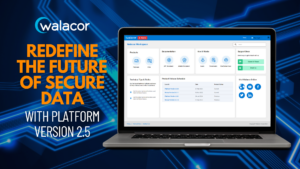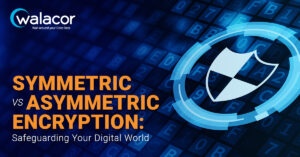In recent years, the digital art and collectibles world has witnessed an unprecedented transformation with the emergence of Non-Fungible Tokens (NFTs). These unique digital assets, authenticated and secured through blockchain technology, have revolutionized the concept of digital ownership and provenance. In this post, we dive into the utilization of blockchain in NFTs and explore how this innovative technology has transformed the art, gaming, and collectibles industries.
What are NFTs?
NFTs are cryptographic assets representing ownership or proof of authenticity of a unique item or piece of content, whether digital art, music, videos, virtual real estate, or even virtual pets. Unlike cryptocurrencies such as Bitcoin or Ethereum, which are fungible and can be exchanged on a one-to-one basis, NFTs are indivisible and irreplaceable. These tokens have a unique identifier and metadata confirming their authenticity and ownership.
NFTs also represent a novel way to think about an individual or company’s biggest asset – data. In an era where individuals and companies routinely provide their data for free to platforms and businesses, the idea of selling that data as an NFT presents an enticing opportunity to reclaim ownership and derive financial benefit. This paradigm shift empowers individuals by letting them tokenize their data, including browsing habits, shopping preferences, and even social media activity. By monetizing their data through NFTs, they not only gain a new revenue stream but also contribute to a more equitable digital economy where the value of data is recognized and compensated.
The Power of Blockchain for Digital Ownership
Blockchain technology serves as the backbone of NFTs, providing several crucial benefits that have transformed the way we perceive and interact with digital assets:
- Immutable Ownership: Blockchain’s decentralized and transparent nature ensures that NFTs’ ownership is securely recorded and cannot be altered or tampered with. This eliminates the risk of fraud and counterfeiting, which is a constant battle in many industries.
- Authenticity and Provenance: Blockchain provides an immutable record of an NFT’s entire transaction history, allowing collectors to trace its origin, ownership changes, and any accompanying metadata. This transparency enhances trust and provides the ability to prove the authenticity and uniqueness of their digital creations.
- Direct Artist-Creator Interaction: NFTs enable artists and creators to engage with their audience directly, eliminating the need for intermediaries such as galleries, agents, or auction houses. Through blockchain-powered marketplaces, artists can showcase and sell their work directly to collectors, ensuring a fairer and more efficient distribution of earnings.
- Royalties and Residual Income: Blockchain technology allows creators to embed smart contracts into their NFTs, enabling them to receive a percentage of future sales or royalties each time their NFT is resold. This groundbreaking feature grants artists ongoing compensation for their work, even as its value appreciates in the secondary market.
Digital Ownership Challenges and Concerns
While the integration of blockchain in NFTs has brought about remarkable advancements in the digital ownership landscape, it is not without its challenges.
One of the main concerns commonly voiced about NFTs is the environmental impact of blockchain technology. The energy consumption associated with blockchain networks, particularly those utilizing Proof of Work (PoW) consensus algorithms, has drawn criticism due to its carbon footprint. However, things have changed, and there are more eco-friendly alternatives, such as Proof of Stake (PoS) and other energy-efficient consensus mechanisms, to address these concerns and make NFTs more sustainable.
Another challenge is copyright infringement and intellectual property rights. While blockchain provides a transparent and immutable record of ownership, it does not inherently address the problem of unauthorized use or reproduction of digital assets. Artists and creators need to consider additional measures, such as digital watermarking or licensing agreements, to protect their intellectual property rights in the digital realm and ensure they are fairly compensated or recognized for their work across owners.
Future Outlook
Looking ahead, the future of NFTs and blockchain technology is promising. As more industries and sectors recognize the potential of digital ownership and tokenization, we can expect to witness further adoption and innovation. Integrating blockchain in NFTs opens up new possibilities for artists, creators, collectors, and enthusiasts alike, transforming how we engage with digital assets.
Moreover, advancements in blockchain scalability and interoperability will enable the seamless transfer and exchange of NFTs across different platforms and ecosystems. This will foster a more vibrant and liquid marketplace, enhancing accessibility and promoting widespread adoption.
Additionally, as blockchain technology continues to evolve, we may see the integration of augmented reality (AR) and virtual reality (VR) experiences with NFTs, creating immersive and interactive digital art and collectibles. This convergence of technology has the potential to redefine the boundaries of creativity and ownership, offering unique and personalized experiences to users.
As any technology matures, widespread usage becomes commonplace and transparent. The most interesting aspect of this future is when the data individuals create becomes this same type of digital asset. This would allow everyone to have insight into and control of how the data gets used. The most significant challenge here is enabling everyone to easily understand and manage these digital assets.
Conclusion
Blockchain technology has unleashed a new era of digital ownership through the advent of NFTs. By leveraging blockchain’s decentralized and transparent nature, NFTs have transformed how we perceive and work with digital assets across various industries.
From revolutionizing the art market and empowering artists, to creating new opportunities in gaming and media, blockchain-based NFTs have opened doors for innovation, creativity, and economic growth. Blockchain’s immutable ownership, enhanced provenance, and direct engagement have reshaped the landscape of digital ownership, ensuring authenticity, transparency, and fair compensation for creators.
While environmental concerns and intellectual property rights need to be addressed, the future of NFTs and blockchain technology is promising. As we witness the continued integration of blockchain in various sectors, the possibilities for digital ownership and tokenization are boundless, paving the way for a more decentralized, inclusive, and immersive digital future.



